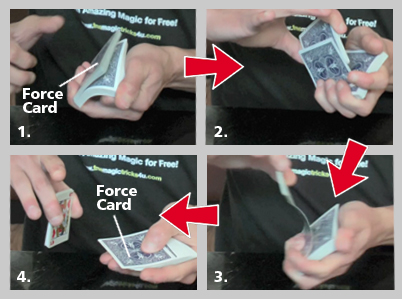There is more to magic than the mere puzzling of an audience. Certainly, they will marvel, wonder at what they have just seen, and try to guess how everything has happened. However, a skilled magician will never let the spectators find clues to his magic. With a well-prepared choreography and a lot of practice prior to the actual presentation, conjurors hold the essential part to working their magic trick on their audience. Present-day illusionists – almost all of them or at least those claiming to possess the skill – choose to start their “magic shows” with a pre-established card trick. The key is in the visual impact upon the spectators, as well as in the effortlessness the magician seems to invest in the whole process. Nothing is more bewildering to an audience than the apparent ease with which a conjuror seems to perform such a magic trick.

Frequently, people find that a well-performed card trick is particularly agreeable precisely because they cannot tell with accuracy how the performer tricked them into seeing what he wanted them to see. Magicians, beware! Most often, you will deal with intelligent audiences who will do their best to put their finger on the specifically deceiving moves that must have accompanied your magic. This is how most of them think, unless you are dealing with children whom we all know to stay always prepared for newer and newer magic to amaze them. However, do not underestimate a child’s manner of perceiving things. You may find, more often than not, surprising (to you) reactions to your magic trickmoves, coming from children.
Generally, audiences display a preference for tricks performed with cards, because many of them create the opportunity of getting close to the magician and to the cards. Although you can approach a card trick in stage magic circumstances, it is nonetheless one of the tricks that remain the strong point of close-up magic. If performed by a “seasoned” magician, a sleight of hand looks like just another regular move. With an exercised sleight of hand, tricks with cards turn into some of the easiest magic tasks you have ever completed. Practically, two sides are essential to the efficient performance of such tricks. First, you need the legerdemain (the sleight of hand) practiced attitude and then you need the aptitude to get away with it, unobserved by the spectators’ eyes.
The legerdemain part obtains its best use if you have patience to learn it until it becomes into just another normal move of your body – this is how you have to perceive it and this is how your audiences should perceive it. Whether it is close-up magic circumstances that you will approach or whether you will act in stage magic conditions, their eyes will watch your every move. This is why it is important to provide your moves – particularly the sleights of hand – with a natural, apparently inartificial appearance, so that they will suppose all the time that there could be no trick in such normal moves. To what concerns the ability to make them believe what they see, this is, in fact, your ability to control them. By making your moves seem as natural as possible, you are redirecting their attention to less important aspects in your performance, i.e. the aspects you can control with the utmost ease.
Generally, when you are performing a card trick, you should do your best to make sure your audiences are not permanently watching your hands. In fact, this is the secret with any magic trick: you need to learn how to misdirect. You can do that in more ways. One of them is to get your spectators to like you and, thus, to want to enter your game with the curiosity and amusement of children – in the case where you are not already in front of such a young audience. Try to introduce your card trick – or any other trick, for that matter – with a joke or a question. This part of the show also requires a lot of practice, because your words must appear as natural and as amusing as possible.

Then you should remember that, when a technique such as the legerdemain is necessary, eye contact is essential for the control of your watchers. Generally, they tend to look where you look, and if you watch your hand moves, they will watch them. If you can look into their eyes and add a little joke while you are operating the “magic” sleight of hand, you may be sure you have attained your goal. In any case, do not panic if they seem too willing to watch your hands. Keep trying to make eye contact. It is impossible for them to stay all the time with their eyes fixed on your hands. Our manners and education always push us into offering feedback with a look to someone who is watching us in a direct manner. Therefore, do not worry that your magic trick will fall to pieces. Every now and then, they will look into your eyes, in their turn, and then, if you have practiced your sleights of hand sufficiently, you will be able to work your magic.

Finally, keep in mind that no magic trick will work if you do not create an agreeable, inviting atmosphere. In close-up magic, inviting your audience to be a part of the “spell” is what they expect and what they enjoy most. You should include in your program card tricks that actually involve the spectators. Ask for volunteers. You will see that many of them are willing to become an active part of your show. If you have prepared it well, things will work smooth and you will provide your audiences with an enchanting touch to their day.
0 comments:
Post a Comment